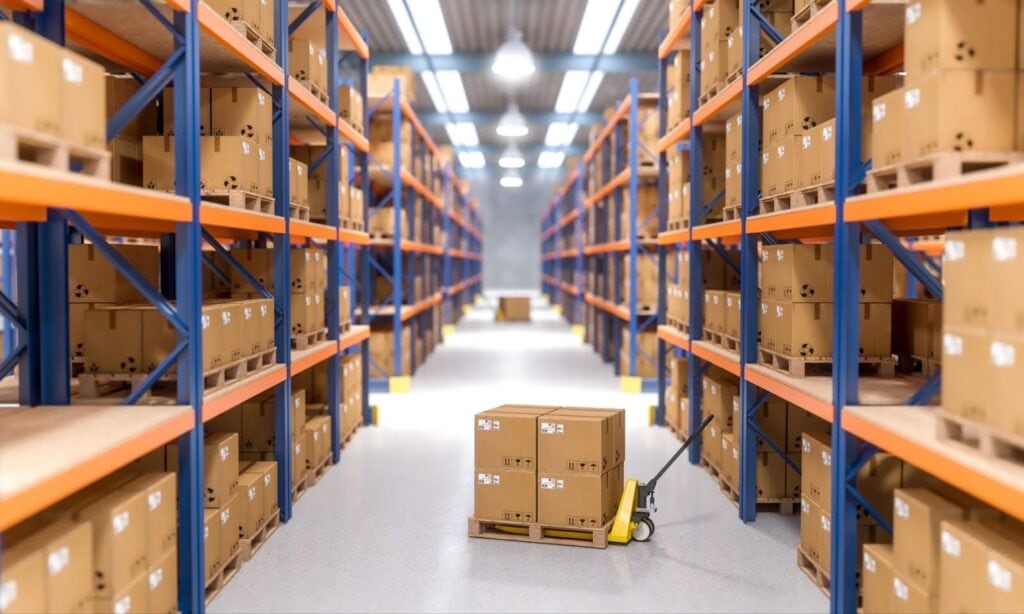Consolidated Warehouse: What It Is, Process, and Benefits

In today’s fast-paced, ever-evolving world of logistics, understanding warehouse consolidation is crucial for businesses looking to optimize their supply chain and reduce costs.
A consolidated warehouse plays a critical role in streamlining operations by gathering small shipments from various sources, organizing them efficiently, and ensuring timely deliveries.
So what exactly is a consolidated warehouse, and how can it benefit your business? In this blog post, we will explore the ins and outs of these logistical hubs while demystifying their processes and advantages.
What Is a Consolidated Warehouse?
A consolidated warehouse is a third-party logistics facility that consolidates individual orders from various suppliers, sorts them into groups based on their destination and specifications, and packs them according to the customer’s order before shipping.
A consolidated warehouse process involves the collection of small shipments from various suppliers and their consolidation into larger, more economical truckloads bound for similar destinations.
For example, suppose three different retailers have orders from separate suppliers for the same region. Rather than each supplier sending out individual shipments, they would send their goods to a consolidated warehouse.
These smaller shipments are combined into one cost-effective truckload and shipped together toward their final destination.
When To Use A Consolidation Warehouse

A consolidation warehouse is a perfect solution when dealing with suppliers in different regions, fluctuating demands, and less-than-truckload (LTL) deliveries.
Supplier Location
A crucial factor to consider when deciding whether to use a consolidation warehouse is the location of your suppliers. Supplier locations play a significant role in determining the efficiency and cost-effectiveness of implementing this strategy.
Take an example of a retail company that sources products from different manufacturers across various regions.
If these manufacturers are close together, third-party logistics (3PL) providers can collect goods from them and transport them to a nearby consolidated warehouse for further processing instead of making individual deliveries.
Fluctuating Demands
Fluctuating demands refer to variations in customer orders, often influenced by seasonal trends, industry growth or decline, and changes in consumer preferences.
Consolidation warehouses provide an ideal solution for navigating these fluctuations by streamlining shipments and ensuring efficient inventory management.
For instance, during peak seasons when customer orders are high, companies may struggle to meet the demand due to limited storage space and increased lead times.
Using a consolidation warehouse helps prevent overstocking or understocking of products and enables cost-effective logistics planning.
Less-than-Truckload (LTL) Deliveries
Less-than-truckload (LTL) deliveries have become increasingly popular as they allow businesses to save on shipping costs by shipping smaller shipments at a lower rate.
The consolidation warehouse process involves combining multiple LTL shipments headed to the same region into a single truckload, which can result in significant bottom-line savings and increased efficiency.
This delivery system is useful when suppliers are located all over the country or when demand fluctuates, making it difficult to plan full truckloads consistently.
Consolidated Warehouse Benefits

Using a consolidation warehouse can lead to more frequent shipments and reduced shipping costs, as well as reducing material handling, maintaining less inventory, and improving customer satisfaction.
Cut Costs
One of the most significant benefits of using consolidated shipments is the potential to cut costs. By consolidating products from different suppliers into a single warehouse location, businesses can reduce transportation costs and simplify logistics.
Consolidated warehouses also offer opportunities for cost savings by reducing material handling requirements. When you combine products in one location, it reduces the number of warehouses that need maintenance.
Businesses enjoy reduced overhead costs while maintaining their desired level of service quality.
Reduce Material Handling
One of the significant benefits of a consolidated warehouse is reducing material handling. When multiple businesses pool their inventory in a single warehouse, it means fewer trucks, less movement of goods, and reduced handling costs.
For example, instead of sending out small shipments individually from each business’s location every day or two days at higher shipping rates for LTL deliveries (Less-than-Truckload), these companies combine their cargo into one shipment to optimize efficiency.
Less handling of materials results in improved supply chain performance and lower transportation costs as they move as one bulk order to the end customer.
Ship More Often
Consolidated warehousing allows businesses to ship smaller orders more frequently, which is an excellent opportunity to increase customer satisfaction rates.
With the ability to combine LTL deliveries when consolidating goods in a warehouse, companies can efficiently manage their inventory and shipping frequencies.
In doing so, they are saving on transportation costs and reducing their carbon footprint by cutting down on unnecessary trips.
Overall, using consolidated warehouses provides many benefits such as optimized storage and warehousing and smarter warehouse management system —leading to a cost reduction through consolidation.
Maintain Less Inventory
Consolidated warehousing is an excellent strategy that many businesses use to maintain inventory levels.
By using a centralized warehouse with smart storage solutions and load grouping, you can optimize your supply chain and reduce the amount of excess or redundant stock.
Consolidating warehouses helps keep labor costs low by reducing the need for multiple warehouses and their associated staff.
When you centralize your operations, it becomes easier to manage everything from one location, which leads to better communication among teams, streamlined processes, and fewer errors in handling goods.
ASRS automated storage and retrieval systems have been key players in supporting warehouse consolidation efforts due to their ability to operate 24/7 while saving valuable floor space compared with traditional racking systems.
Customer Satisfaction
By consolidating shipments, companies can offer faster and more reliable delivery times at a lower cost.
In addition to these benefits, customers also appreciate receiving their orders on time — which translates into increased loyalty and repeat business for companies that use consolidation warehousing.
Improved inventory management through consolidation can also lead to better stock availability and flexibility in meeting customer needs such as customized packing or labeling preferences.
Consolidated Warehouse Challenges
Delays and errors in fulfillment can occur due to the extensive sorting, packing, and shipping process involved in consolidation warehouse operations.
Delays And Errors in Fulfillment
Implementing consolidation warehousing procedures can help businesses optimize their supply chain and reduce shipping costs. However, miscommunications and coordination issues can lead to delays and errors in order fulfillment.
For example, inaccurate information about shipment details or a lack of communication between warehouse staff and carriers could cause delays in freight transportation.
Warehouse consolidation requires extensive planning and proper execution to ensure that shipments arrive on time at their destinations.
Extensive Planning Required
One of the main challenges associated with managing a consolidated warehouse is that it requires extensive planning.
To ensure that products from various suppliers can be combined into one shipment, logistics professionals must carefully coordinate schedules, routes, and transportation modes.
For example, if a company wants to consolidate shipments from several suppliers located in different regions across the country, it will need to plan for efficient multi-modal transportation options that could include combining rail and truckloads.
Similarly, consolidating small orders into fewer large ones may require significant inventory optimization efforts such as implementing just-in-time (JIT) or vendor-managed inventory (VMI) systems.
FAQs
Let’s look at some common questions people have about consolidation warehouses.
What is a consolidation and break bulk warehouse?
A consolidation warehouse is a third-party storage facility where small shipments from different customers are combined into larger and more economical truckloads bound for the same destination.
It simplifies logistics, consolidates shipments, improves operational efficiency, and results in considerable cost savings. On the other hand, break bulk warehousing refers to storing individual items or small quantities of shipments instead of consolidated cargo.
Why is my package at a consolidation warehouse?
If you’re wondering why your package is at a consolidation warehouse, it’s because this facility is used to streamline shipments for companies with large numbers of orders.
By combining smaller shipments into larger truckloads bound for similar destinations, costs and time are reduced for all involved parties.
Enjoy the Benefits of a Consolidated Warehouse
A consolidated warehouse is a strategic approach to lower shipping costs, decrease handling and claims, and improve customer satisfaction.
The process involves gathering small shipments from multiple suppliers and organizing them into groups based on their destination and order specifications.
Using a consolidation warehouse can lead to more frequent shipments, reduced shipping costs, and lower inventory levels.
